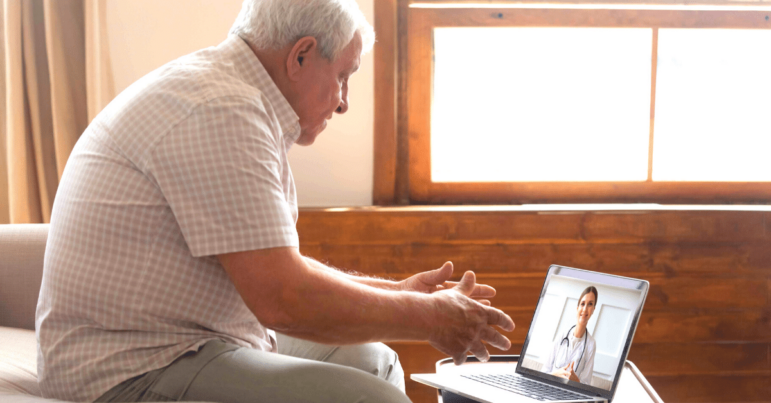The Covid-19 pandemic has ushered in the era of telehealth. Telehealth, which refers to remote communications such as phone and video, became much more popular as patients were encouraged to seek medical advice remotely and providers were able to be reimbursed for these visits. Before Covid-19, about 14,000 Medicare beneficiaries had a video visit in any given week; in the first Covid-19 surge, 10 million Medicare beneficiaries were accessing telehealth each week. Besides helping protect patients and clinicians from Covid-19, many patients also find video visits accessible and convenient.
However, some clinicians have concerns about telehealth that should be addressed, including the potential for increasing inappropriate prescribing. A recent study in Pediatrics looked at antibiotic prescribing for acute respiratory infections for pediatric telehealth visits, compared to urgent care and primary care provider offices. Researchers matched patient visits based on age, health conditions, state, and other patient characteristics. Antibiotic prescribing for colds and ear infections in children is not recommended but still very common. More than half (52%) of telehealth visits resulted in an antibiotic prescription, compared to 42% of urgent care visits and 31% of primary care office visits), a difference that is concerning.
Why would video visits be more prone to unnecessary antibiotic descriptions? The authors of the study speculate that because “a physician can’t physically examine a child remotely, he or she may not be sure about the diagnosis and prescribes antibiotics under a ‘better safe than sorry’ approach.” Another reason might be because the study measured telemedicine visits “outside the medical home,” which is different from video visits with one’s usual primary care provider. These types of “direct-to-consumer” businesses may result in more antibiotic prescribing because companies are concerned with keeping patient satisfaction rates high, and therefore will go against the guidelines to give patients antibiotics that they don’t need.
The study authors warn in an op-ed in STAT that the combination of increasing Covid cases and telemedicine could exacerbate this trend. “With more anxiety, more people getting sick, more people getting care, and more telemedicine use, doctors may inappropriately prescribe more antibiotics,” they write.
Overprescribing is also a major issue for older adults, with an estimated 34% of adults over 65 receiving one or more potentially inappropriate medications. Could our newfound reliance on telehealth exacerbate medication overload?
Judy Benkeser, BSN, RN, a nurse and care navigator at a Michigan Medicine primary care practice in Ann Arbor, believes it might. Most of her patients have multiple complex medical issues or psychosocial barriers, and many are taking multiple medications. While telemedicine is more convenient for lots of patients, there are many challenges using telemedicine for elderly, complex patients and other vulnerable populations. “I see many articles extolling the benefits of telemedicine, but few pointing out that it may not be for everyone,” Benkeser said.
In an email correspondence, Benkeser pointed out that medication reconciliations are less likely to take place during a virtual appointment, because this task is generally deferred to medical assistants or nurses in clinics, and because patients’ hearing or vision issues (and technology glitches) make the process more difficult. When prescribing a new medication, or making a medication change, clinicians try to “teach back” — to provide verbal instruction to patients, and ask them to repeat the instructions back, to make sure they understand. Video visits offer less opportunity for these checks.
The lack of coordination between care sites during the pandemic provides another obstacle to deprescribing. Not all electronic health record systems are compatible at all care sites, making it hard to share documentation from visits with primary care doctors. The pandemic has led to a drop in staffing at many medical offices, which exacerbates the coordination problem.
Benkeser also notes that requests for antidepressants, anti-anxiety meds, and sleep aids have risen during the pandemic. These prescriptions require careful, gradual dosing and close monitoring to ensure patients avoid adverse events, which is tougher to do with virtual visits compared to in-person.
When patients have to do visits over the phone rather than video, clinicians lose the opportunity to recognize signs of medication overload. “Physical examination–especially in vulnerable, elderly, or clinically complex patient populations– encompasses more than simple taking of vital signs. I watch how someone gets out of their chair and walks across the waiting room when they are in our office. Can they get on and off our scale? Can they walk down the hallway to the exam room without showing signs of fatigue or having difficulty breathing?” Without these clues, overmedication may go unnoticed, and could lead to harm.
